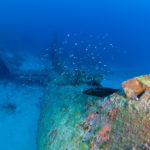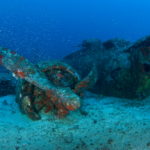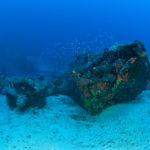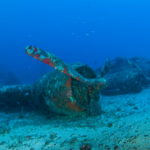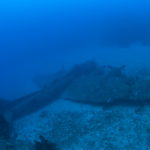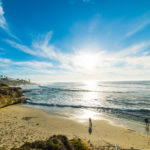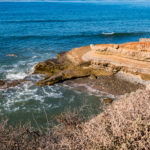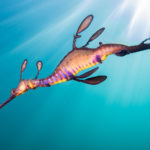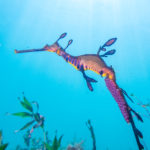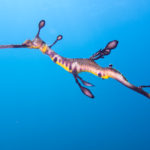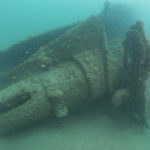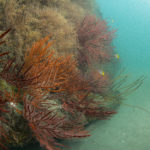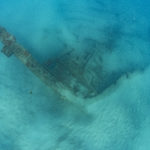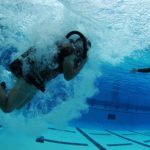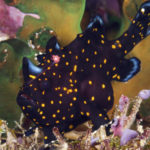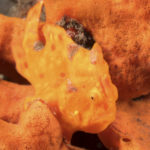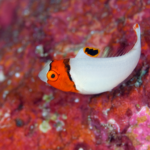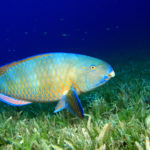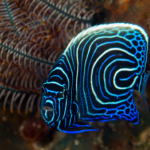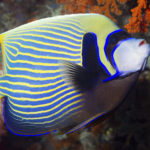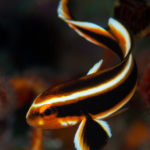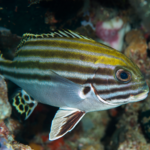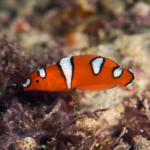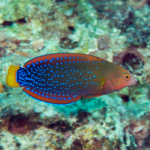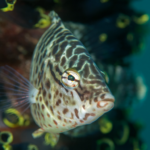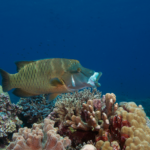Begun in 2015, PADI Women’s Dive Day, held every July 15, has spawned 700 events in 77 countries. The Big Five Dive, held in the Great Lakes in 2016, was one such event.
PADI Women’s Dive Day and the Big Five Dive
PADI Women’s Dive Day began in order to strengthen and grow the female dive community. As a result of the initiative, both male and female divers take part in hundreds of events across the globe each year. Part of the second annual event in 2016, the Big Five Dive connected 14 female divers from all walks of life, intent on a mission: to dive an historic site in all five Great Lakes in less than 24 hours.
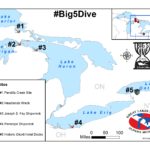
“We hope to inspire the next generation of female divers to explore both careers and recreational opportunities in our underwater world, whether it’s in the Great Lakes or the ocean,” says Nick Myers, Big Five Dive sponsor and owner of Michigan PADI Dive Center Great Lakes Divers.
The Big Five Dive team included a graphic designer, two underwater archaeologists, an environmental educator, and a college student. Joining this core group were eight women, all a part of the all-female Sedna Epic Expedition. Sedna plans to snorkel all 2,000 miles of the Northwest Passage to bring global attention to disappearing sea ice in the Arctic.
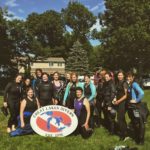
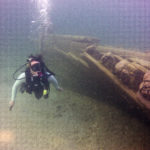
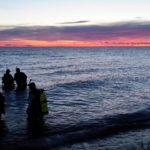
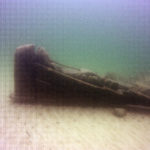
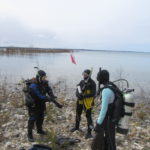
Choosing the Great Lakes
When putting together the dive plan, the Big Five Dive reconnaissance team reached out to Great Lakes dive networks to find suitable dive sites. With the short time frame, they needed to find locations shallow enough to allow for multiple dives and a range of abilities. By tapping into local knowledge, the team connected to different communities, all linked through the Great Lakes watershed. “We’ve been so impressed with how supportive the Great Lakes maritime heritage community has been,” says maritime archaeologist Stephanie Gandulla.
“Whether it’s shipwreck experts sharing their knowledge, or locals at each site helping out with logistics, everyone has been really interested in exploring our Great Lakes via the Big Five Dive.”
Known for its rich maritime history, the Great Lakes hold thousands of shipwrecks. With all of the incredible dive spots, the Big Five Dive crew initially struggled to select historic sites. The 24-hour timeline, however, helped to narrow options. The wrecks needed to be both shore-accessible and close to major roads. The sites that the group settled on included top tourist destinations in the Great Lakes, and many community members came to support the divers throughout their journey. They began at midnight in Lake Superior.
Dive No. 1: Lake Superior
12:00 am | Pendills Creek, Michigan | Unidentified wooden shipwreck
Two minutes before midnight on the southern shore of Lake Superior, 14 women stood on the beach in scuba gear ready for the first of five dives, one in each of the Great Lakes. As they awaited the go-ahead to plunge into the dark water, they contemplated what lay before them…the largest freshwater system on earth.
Buddy teams quickly entered the dark, 46-degree water, and fin-walked for about 100 feet through crashing waves before it was deep enough to submerge. The divers swam on the surface, focusing on two kayakers with lights stationed at the shipwreck site. After just a few minutes of swimming, most teams had reached the small, unidentified wooden wreck and descended to a maximum depth of 15 feet for the first dive of the night.
Dive No. 2: Lake Michigan
2:40 am | Headlands International Dark Sky Park, Michigan | Unidentified wooden shipwreck
Lake Superior’s rolling waves gave way to placid waters in Lake Michigan at the next site, an hour and 20 minutes south on the northern tip of mainland Michigan. A cloudless, starry night greeted the women at the Headlands Dark Sky Park as they geared up and gathered for a quick dive briefing before scrambling down a cobble beach to the entry point. One buddy team after another, they entered the water and set out for a lengthy surface swim. The divers navigated to the unmarked shipwreck with the aid of a full moon, and of course, their dive lights. Adding to the stress of limited visibility was the constant reminder of their timeline…the clock was ticking.
Lake Michigan’s water was calm compared to the crashing waves of the first dive, and although the dive would last only 10 minutes, the women enjoyed a peaceful exploration of another unidentified wooden shipwreck, about 17 feet deep. The water was warming up as the team dove and drove their way south — Lake Michigan was a balmy 52 degrees.
Dive No. 3: Lake Huron
5:30 am | 40-mile Point, Michigan | Joseph S. Fay, wooden freighter
The sun had not yet peeked over the horizon as the divers arrived at the third dive site, 40-mile Point, a picturesque spit of land nestled in the northeast corner of Michigan’s lower peninsula. The backdrop on land was as striking as the imminent sunrise: an 1896 lighthouse, a freighter’s wheelhouse, a fog-signal building, and even shipwreck remains littered the beach and surrounding grounds.
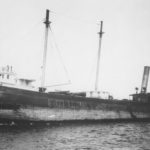
Encouraged by Lake Huron’s uncharacteristically calm waters, the group swam out into Thunder Bay National Marine Sanctuary and enjoyed their dive on the largest and most intact shipwreck they would experience that day. The Joseph S. Fay went down in a gale in 1905, and is one of nearly 100 shipwrecks that the sanctuary protects. It’s a stunning example of the preservation possible due to the cold, fresh water of the Great Lakes. When the divers surfaced after a 10-minute dive, the morning sun brightened and warmed their return to shore. Enthusiastic supporters cheered as they emerged from the lake and prepared for the next, and longest, leg of the journey.
Dive No. 4: Lake Erie
4:42 pm | Private residence, Ohio | Penelope, wooden tugboat
The fourth dive was the greatest challenge for the team. The women had been monitoring the weather on Lake Erie as they got close, and conditions were not looking good. Entry to the site was generously provided by shoreline homeowners, but a storm had recently washed out the access point. The waves were fierce, and unpredictably smashed into the damaged break wall. The team decided to go for it with some careful planning for entry and exit. Churning waters made actually seeing the shipwreck difficult, with visibility ranging from 6 inches to a few feet.
When the dive was over, the homeowners and other supporters formed a “bucket-brigade” line to receive tanks, BCDs, and fins from divers before they helped haul them out of the water onto the break wall. After everyone survived, the women knew they could make it to Lake Ontario and complete their final dive in time.
Dive No. 5: Lake Ontario
10:17 pm | Niagara County Krull Park | dock remains at the site of the Olcott Beach Hotel
Dangerously close to the 24-hour deadline, the divers were anxious to don their gear one last time at the final site in Lake Ontario. Nervously glancing at dive watches, the women quickly entered warm, shallow waters along a sandy beach in downtown Olcott, New York. The site was the former location of a historic hotel and docks. Some divers searched the lake bottom looking for artifacts from the 19th-century hotel, and spectators on shore saw what seemed to be a mysterious freshwater bioluminescence as 14 softly glowing lights crisscrossed the shallows in search of Great Lakes historic treasures.
Award-winning filmmakers Mad Law Media followed the divers to document the adventure. The film will premiere at the Thunder Bay International Film Festival in January 2018 in Alpena, Michigan. Click here for more information about the film. NOAA’s National Marine Sanctuaries’ Earth Is Blue Campaign also highlighted the Big Five Dive. Watch the video here:
The Big Five Dive brought together divers with varied experiences and backgrounds, many of them meeting for the first time. During the surface intervals — 993 miles on the road — they shared life stories and genuinely connected. Pushing one another outside of comfort zones, the divers not only saw new dive sites, but also experienced cold and exhaustion. They learned not only about themselves but gained a new diving network as well.
Great Lakes Divers, a PADI Dive Center in Alpena, Michigan, sponsored the Big Five Dive.
By guest authors Stephanie Gandulla, Meaghan Gass and Sarah Waters
The post The Big Five Dive appeared first on Scuba Diver Life.
from Scuba Diver Life http://ift.tt/2FFb3cn










